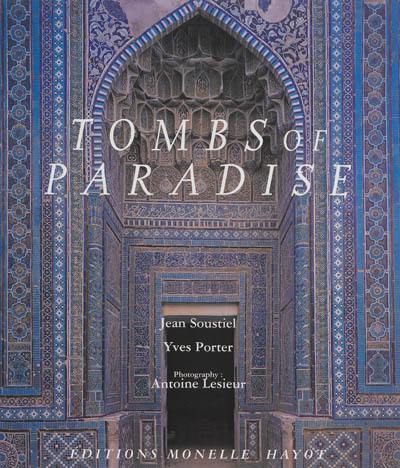
Paru le 06/02/2013 | Relié sous jaquette 264 pages
Tout public
photography by Antoine Lesieur | coordination Marie-Christine David | preface Marthe Bernus-Taylor | English translation Damien Janos | edited by Ellen Hampton
Tombs of Paradise
The Shah-e Zende in Samarkand and the architectural tiles of Central Asia
The necropolis of Shah-e Zende at Samarkand represents a summit in the art of ceramic wall coverings in the Islamic world. Despite the recent increase of interest in this region, this is the first study to describe these monuments in all the detail of their decoration and its techniques and motifs, as well as the different types of ceramics used and their composition.
As Shah-e Zende offers a microcosm of the technical evolution of ceramic arts in Central Asia between the twelfth and fifteenth centuries, this work examines the individual monuments whose decoration represents steps along that ancient road. It is a study of cultural heritage, and at the same time a reference work for admirers of Islamic architecture and ceramics.
Jean Soustiel (1938-1999), was raised in a family of art dealers, and began specializing in 1963 in Islamic art, particularly Islamic ceramics. He authored many auction catalogues and appeared at several conferences, notably at the Ceramics Museum of Sèvres. He was also the author of an important reference work, Islamic Ceramic, Friburg, 1985, written in collaboration with Charles Kiefer, technical director of the National Manufacture of Sèvres. Jean Soustiel traveled extensively in Central Asia with Marthe Bernus-Taylor under the aegis of the Institut Français d'Etudes sur l'Asie Centrale (IFEAC) in Tashkent (Uzbekistan). In 1983, he and Marie-Christine David founded a firm of experts in the field, which also has organized exhibitions on the arts of Islam and Indian miniatures.
Yves Porter, born in 1957, has studied many Oriental languages (Persian, Pashto, Turkish, Arabic, Urdu and Hindi) and has lived periodically in Iran and India. He holds a doctorate in Iranian studies and currently teaches Islamic art at the University of Aix-en-Provence. He has published several articles and scientific works, as well as books for the general public. He has also participated in several missions to Uzbekistan organized by the IFEAC.
Antoine Lesieur, born in 1954, is a Paris-based photographer with experience in fashion, advertisement, still life and landscape photography. He has traveled extensively in Sub-Saharan Africa, India, Indochina, Central Asia and Chinese Turkestan.